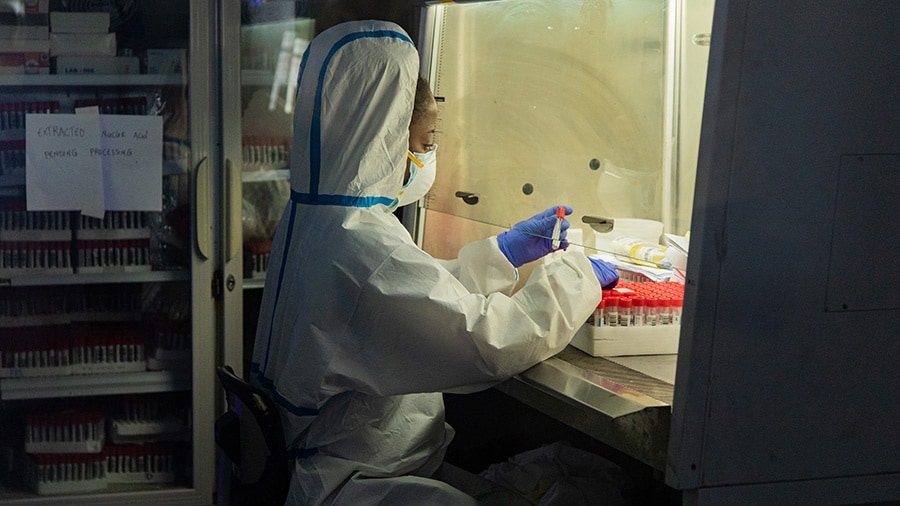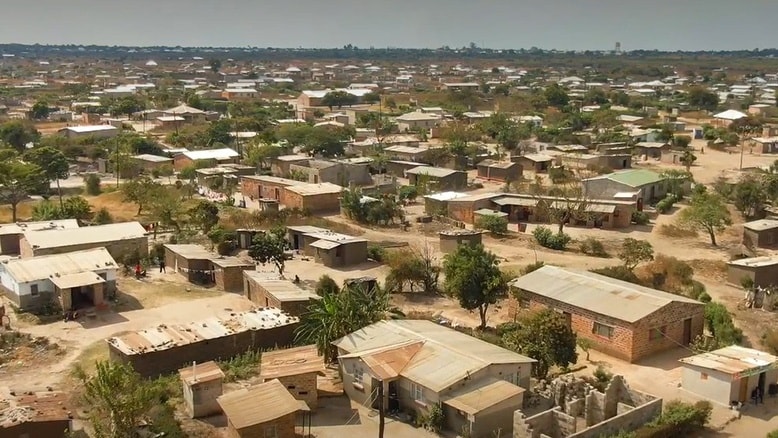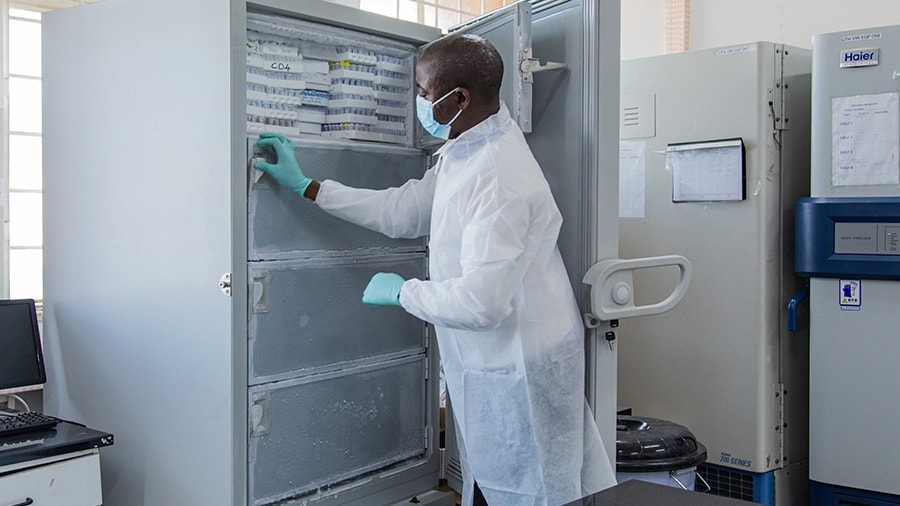At a glance
During the COVID-19 pandemic, CDC partnered with Zambian public health experts to support the response. Top priorities included preparing laboratories for COVID-19, increasing vaccination rates and ensuring access to HIV treatment for people living with HIV.

Building on existing partnerships
CDC and Zambia's Ministry of Health (MOH) have worked together to protect the public's health since 2000.
Zambia government officials detected its first COVID-19 cases on March 2020 and acted quickly to limit its spread. The government restricted travel into the country, shut down public gathering places (e.g., restaurants, churches), and asked residents to stay home.
CDC and MOH recognized that continuing regular health services during the pandemic, including providing HIV treatment, was essential but challenging.
Ensuring access to HIV treatment
People in need of HIV treatment faced challenges during the COVID-19 pandemic as staying at home was not a good option. They had to go out to get their medications at clinics or dispensaries. To address this challenge, CDC supported an MOH program that provided enough medications for people living with HIV. With three or six months of medications, people could stay home without interruptions to their treatment. Agolory said the initiative was instrumental in preventing more deaths during the pandemic.
CDC also partnered with local faith-based organizations—like Circle of Hope—to provide HIV and COVID-19 prevention information to community members.
Establishing COVID-19 testing in Zambia

Getting COVID-19 testing set up in Zambia was a top priority for CDC Zambia. The team collaborated with the University Teaching Hospital (UTH) and Tropical Disease Research Centre (TDRC) to provide testing across Zambia.
UTH is Zambia's main teaching hospital for doctors, nurses, and other health professionals. It is also the largest hospital in the nation's capital, Lusaka. This lab could test for the coronavirus because the same technologies used to diagnose influenza are used to diagnose COVID-19.
The CDC team also supported expanding testing at the TDRC located in Ndola, roughly 200 miles north of Zambia's capital. Agolory and his colleagues shared their expertise to help set up a lab for COVID-19 testing and train TDRC staff. Support from CDC Zambia allowed the TDRC lab to increase the number of samples they could test each day.
CDC Zambia provides support for COVID-19 studies
Taking another look at the numbers
In July 2020, the number of people getting sick from COVID-19 was increasing quickly. The MOH launched a study to better understand how many people were getting infected. This information would improve the COVID-19 response in Zambia and ultimately save lives.
The CDC office in Zambia supported the MOH with technical advice and funding for the research. Yingst and CDC's medical epidemiologist in Zambia, Dr. Jonas Hines, helped the MOH design and start the study. Their work included defining how data would be collected, managed, and analyzed.
Researchers conducted the study in six districts of Zambia where about one quarter of the country's population lives. This is the first representative study in Africa to show how prevalent COVID-19 was in a population. It was published in the medical journal Lancet Global Health. The study results provide important information for Zambia and sub-Saharan Africa.
The study results provided evidence to put an end to the myth that countries in Africa were spared from the pandemic.
"In this study, only one case was reported for every 92 infections that occurred in the community," says Hines. "One reason for that may have been because there were many asymptomatic infections." Hines says the research showed that three out of four people did not have any symptoms while they had COVID-19.
"An important finding from our study is that COVID-19 infections were more geographically widespread than routine surveillance data indicated," says Hines. Other studies across Africa showed similar rates of people with COVID-19 but not showing any symptoms. Lloyd Mulenga, MD, professor of infectious diseases at UTH, says the research helped in preparing for Zambia’s second wave of COVID-19.
Study shows COVID-19 vaccine helps Zambians
With the Field Epidemiology Training Program (FETP) under the Zambian National Public Health Institute (ZNPHI), CDC facilitated a vaccine effectiveness study. In 2021, Dr. John Simwanza, a FETP resident, led an investigation of a COVID-19 outbreak at a Zambian prison.
Among the 382 prisoners participating in this study, 75% were fully vaccinated. Of the vaccinated prisoners, 65% were less likely to get COVID-19. Of the vaccinated prisoners who tested positive, 73% were less likely to have symptoms. None of the vaccinated prisoners had severe COVID-19 symptoms or died.
Simwanza says, "These findings are important for Zambia because most clinical trials were done outside Africa." The results of this local study can be used to increase COVID-19 vaccination in Zambia and other African countries.
The study also shows how the U.S. government's partnership with ZNPHI strengthens the public health sector in Zambia.
Collaborating on laboratory testing and surveillance

CDC Zambia's support for laboratory testing and surveillance were important parts of the COVID-19 response in Zambia.
"Surveillance relies heavily on laboratory testing" says Monze. She says with laboratory testing capability, health officials are aware of the number of COVID-19 cases and prepared for the future.
"We now have collaboration with the government and MOH to continue to identify variants, outbreaks, and address issues together," says Yingst. "We can work together to protect Zambians and globally to protect each individual country from this current pandemic and future pandemics."
